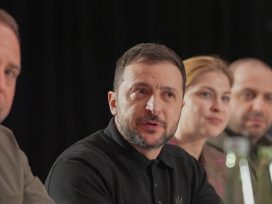
The ‘Trump–Putin deal’ again places Ukrainians in a subaltern role. The leaked contract with its fantasy $500 billion ‘payback’ has been compared to Versailles, but the US betrayal recalls nothing so much as Molotov–Ribbentrop.
Memory as source of personal and collective resistance: on Yuri Dmitriev’s effort to document the history of the Mordovian GULAG while himself imprisoned in one of the penal colonies in the region, by a member of the Memorial Society.
In 2016, Yuri Dmitriev – the head of the Karelian branch of the Memorial Society – was arrested on an anonymous denunciation, facing false charges that ruined his family’s life and, for himself, have resulted in years of imprisonment.
For more than thirty years – half of his life – Dmitriev has been studying the traces of the Stalinist regime’s crimes in Karelia. Part of his work is spent in archives, the other part in the field in search of secret burial sites. His main topic is the executions during the Great Terror from 1937–38. The truth about them has not been fully disclosed: many sites have not been found and archival documents remain classified. What we know is thanks to enthusiasts like Dmitriev.
The work of restoring the memory of murdered people has never been easy, and in recent years it has become dangerous too. Almost simultaneously with the final verdict in Dmitriev’s case, two central Memorial organizations in Moscow were liquidated, one of which I worked for.
Yuri is a friend of mine and a senior colleague who once helped us in preparing an expedition to the White Sea coast. I met him in 2015 when I went to Petrozavodsk to look for traces of the Solovetsky camp departments in the National Archives of Karelia. He made me think in a deeper and more serious way about the case I was studying. Through him I came to realize that the history of repressions is not just a topic of research, but a source of enormous pain, compressed in the memory of several generations, undisclosed, unprocessed and unmourned.
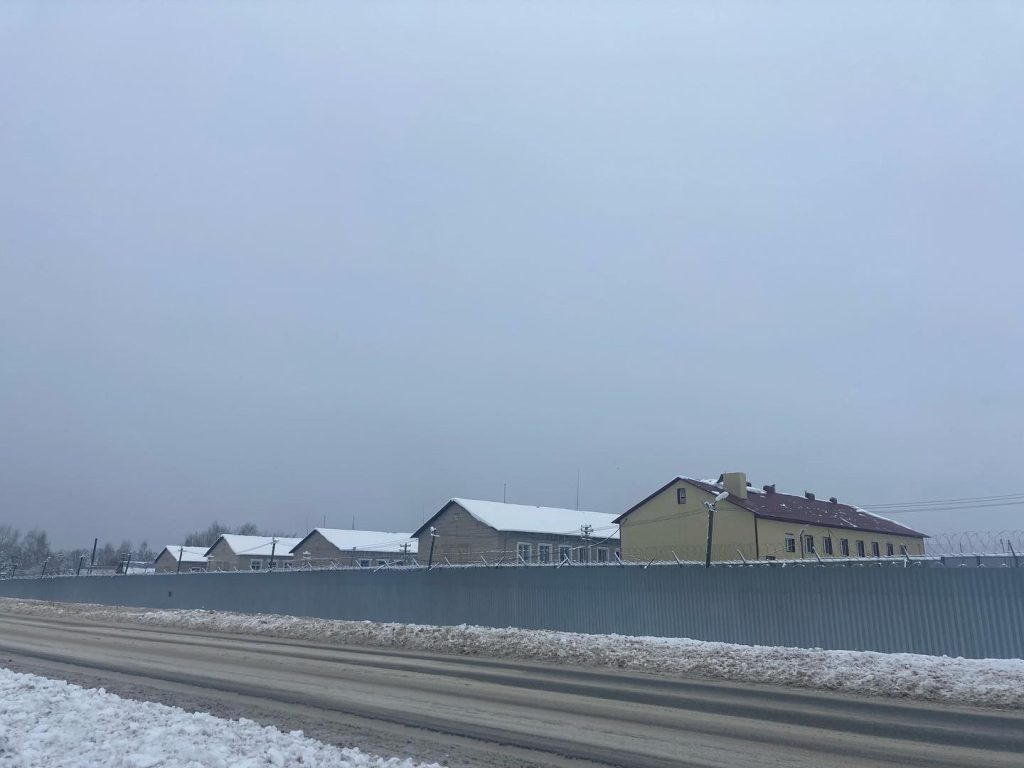
Copyright: Aleksandra Kononova
Touching this pain makes the historian a participant in it. One must make a choice to accept it as one’s own or to distance oneself. In Yuri’s case, it was comprehension of other people’s pain and unwillingness to disassociate himself that led him to become a historian.
I visited Yuri in the colony in November 2022 with Sasha Kononova, an artist and filmmaker. Together with other friends and supporters, we had attended his trial between 2016 to 2021, writing about Yuri, his work and how much it meant. During that time, we were able to see him and to speak to him only occasionally and briefly. Our common struggle ended in defeat.
The liquidation of Memorial was followed by a war unleashed on the territory of Ukraine. This new reality, with its nightmarishness, overshadowed everything that was happening here in Russia. It obscured, but did not make us forget. On the contrary, it now seems more important than ever to rethink the history we study and in which we live as an inseparable whole.
When the researcher of the era of repressions finds himself among the victims at a turning point in time, we get a sense of the return of evil. For the historian, it entails a monstrous choice: to fall into despair, or to find the strength to comprehend everything that has happened. While in custody in the Petrozavodsk prison castle in East Karelia, Yuri Dmitriev prepared his books Krasny Bor and The Motherland Remembers Them for print.
He also started working on the multi-volume Sandarmokh with his friend, the historian Antatoly Razumov (they managed to hold working discussions before and after court sessions, during rare meetings and in correspondence), and gave a series of lectures to fellow inmates about the history of the place. In the 1930s, Petrozavodsk prison had held people whose path ended before the firing squad. Yuri had spent thirty years recovering their fates from oblivion. Being kept within the same walls was a special experience for a historian. But such proximity to his subjects was paid for by the months and years crossed out of his own life.
Five years spent in Petrozavodsk were followed by a series of transfers. First, to a colony in the settlement of Nadvoitsy (the former administration of Belbaltlag, which Dmitriev had written about in a book), then through the prisons of St Petersburg, Nizhny Novgorod, Yaroslavl, Ryazan, before finally ending up in Mordovia.
The Mordovian camps are one of the GULAG’s first huge ‘islands’, a whole district that remained after the abolition of the main part of the ‘archipelago’. ‘Those camps are well-known, well described in literature,’ Dmitriev wrote in a letter to his family before his hasty and unexpected departure from Nadvoitsy. His destination was notorious, and the news alarmed us.
Finally, in May 2022, word began to come from Yuri. For the first time in the years of his life’s quest, Dmitriev found himself in a place that, as a Karelian local historian, he had not yet touched in his research.
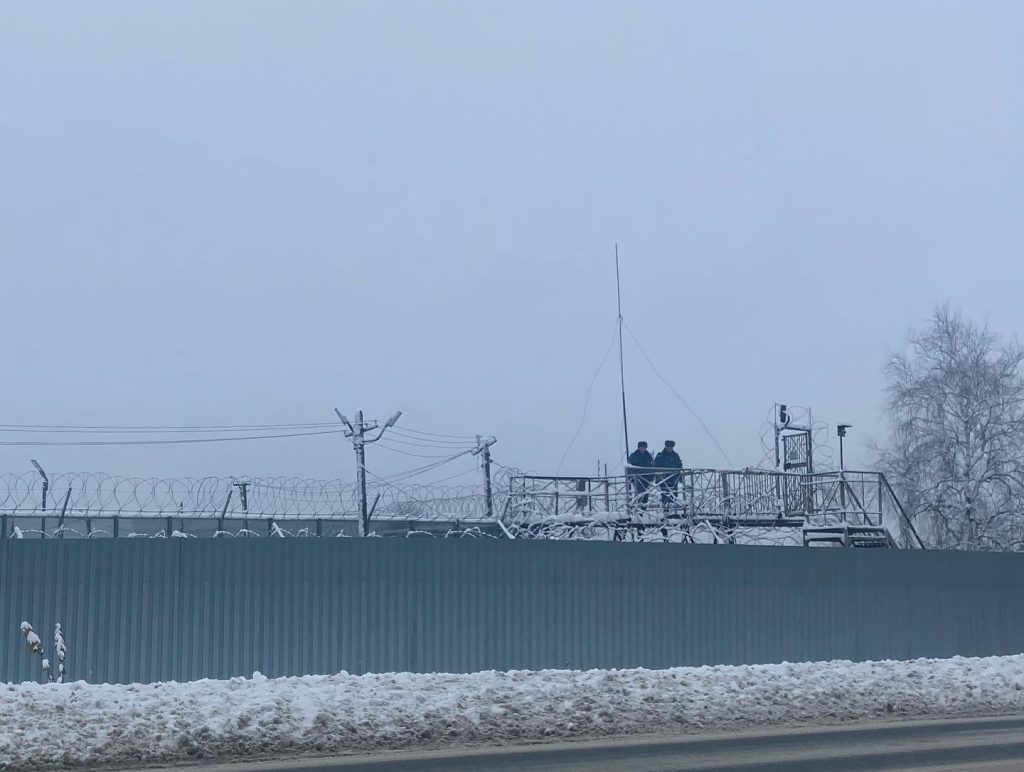
Copyright: Aleksandra Kononova
The colony where Yuri Dmitriev is now incarcerated, IK-18, is located in the Mordovian settlement of Potma. That is also the name of the railway station. The train from Moscow arrives there at four a.m. The platform is covered with snow, blackness on both sides. In Mokshan, the language of the native population, ‘Potma’ means ‘backwoods, a remote place’. The first impression is exactly that. The small station is the only building where one can wait in the warmth until dawn. There is only one other person there: a middle-aged woman with a large trolley. There is no need to ask what brings her here.
In the waiting room we discover the semblance of a museum: two small glass showcases with embroideries, pots and goblets of the Moksha people, who seem to have completely disappeared from these parts. The text on the wall tells the history of the village and the station, but is silent on what was involved in the ‘mass construction in the 1929–30s’. Most people passing through this station will be as aware of the camps’ existence as we are. For whom, then, is the sanitised history written?
We soon notice that the true memory of the place is still present, though not overtly. A piece of cardboard with a QR code is pasted to one of the windows. The link opens an amateur blog with basic information about the network of camps and their history: ‘My Mordovia. Dubravlag’. The main feature of each of the surrounding villages – their semantic centre – is the ‘zone’. The network of penal colonies still covers the whole district. Yavas, Zubova Polyana, Partza, Lesnoy, Molochnitsa: each settlement has one or two, sometimes three.
Once there was a railroad line from Potma connecting the camps in the district. The train went from zone to zone, but the line was also used by locals. Although the Potma branch no longer exists (the railway is closed and the tracks have been dismantled), the word that unites the camps and settlements remains. All the people living on the ‘branch’ are connected to the zone in one way or another. There is simply no other work here.
No doubt the station staff will remove the cardboard square from the showcase if they are ordered. Still, we are grateful for this attempt to share a genuine part of Potma’s history.
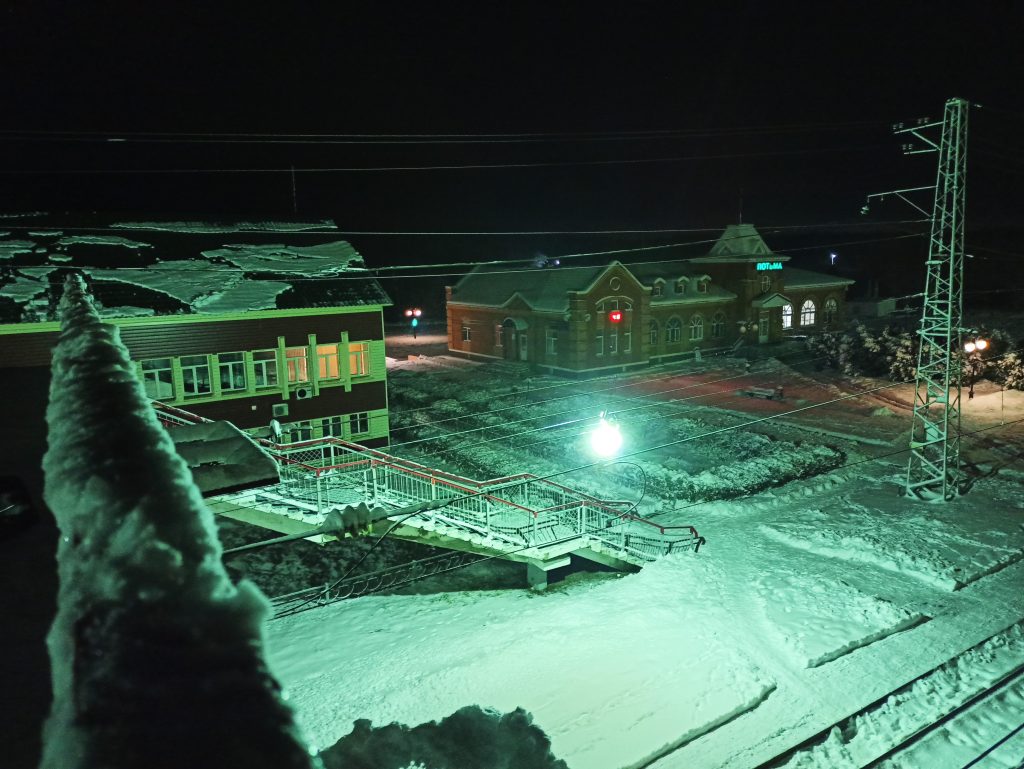
Copyright: Irina Galkova
‘Dubravlag’ is often used synonymously for all the camps in the area, although the camp itself it only operated from 1948 to 1954. The first camp in the Zubovo-Polyansky district was the Temnikovsky correctional labour camp (Temlag), built in 1931 as part of the new GULAG system. The administration was located in the settlement of Yavas. Temlag grew and by 1933–34 the number of inmates had exceeded 30 thousand. They harvested timber and worked in the primary processing of wood, also building the Ryazan-Potma railway.
In 1937 one of the USSR’s main ‘women’s zones’ was opened in Temlag. It contained thousands of ‘wives of traitors to the fatherland,’ most of whose husbands had been executed during the years of terror. In 1948 Temlag was transformed into a high-security camp for dangerous criminals.
A network of camps with the beautiful names of Rechnoy (River), Ozerny (Lake), Peschany (Sandy) and Mineralny (Mineral) was created against the background of the new wave of terror in the late 1940s. Dubravny (Oak Woods), otherwise known as Dubravlag, became known for its strict regime and numbered registration of prisoners, who were deprived of their names and surnames. Almost all Dubravlag prisoners were ‘political’, that is, serving time for ‘anti-Soviet activity’, defined as any negative statement against the authorities, made in jest or in earnest.
In 1954 the Dubravlag was transformed into an ordinary camp and, with the termination of the GULAG system, the name ‘Dubravlag’ was replaced by the colourless acronym ZH-385 (ZH – ‘railway network’). But the camp network itself survived the change of several eras and regimes. From the 1960s to the 1980s it was one of the largest political zones in operation, which prisoners still referred to as Dubravlag. Many writers, artists, scientists, and human rights activists were inmates in the Dubravlag at various times, including Nina Gagen-Thorn, Alla Andreyeva, Rostislav Gorelov, Susanna Pechuro, Andrei Sinyavsky, Yuli Daniel, Anatoly Marchenko, Irina Ratushinskaya, Kronid Lubarsky, Yuri Galankov and Tatiana Velikanova.
During the war years and the immediate post-war period (1941–1947) the Temnikov camp for prisoners of war No. 58 operated in Potma. In addition to German prisoners of war, it contained Italians, Hungarians, Romanians and French. Many came to Potma from the notorious Radovsky camp in the Tambov region. Some of them remained forever in the Mokshan soil. All the upheavals of the Russian history of the 20th century – and, in part, world history – had their continuation in these remote Mordovian settlements, where human pain and sorrow sank forever in the local swampy soil.
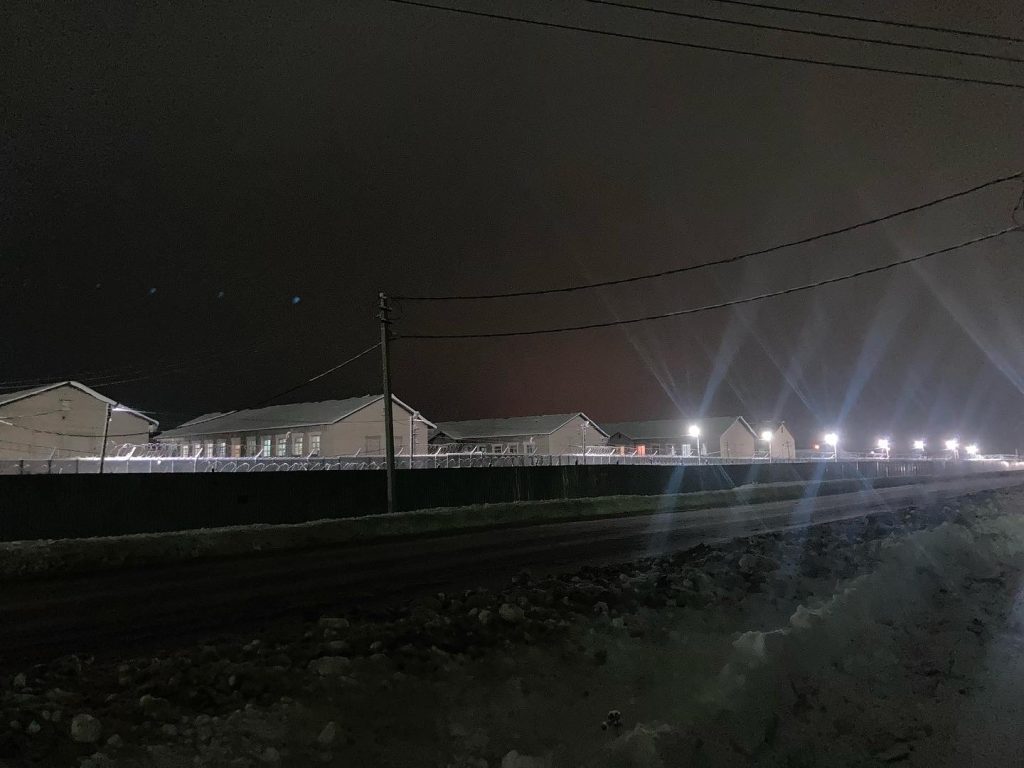
Copyright: Aleksandra Kononova
At dawn we leave the station and begin our exploration of Potma. It is difficult to say what in the appearance of the village has been preserved and what has changed. At first glance, nothing appears to remain of the GULAG camps. Only the sense of captivity itself and a peculiar feeling of dreary indifference and external wariness. The system here did not die, but has been renewed and modernized.
A metal fence with coils of shiny barbed wire stretches along the entire length of Shkolnaya (School) Street. Behind it are rows of two-story barracks made of grey silicate bricks. On the other side of the street is the work area, also behind the fence. A pedestrian bridge spans the street, sandwiched between the two fences. (Why is it called ‘School Street’?) It is impossible to see who is crossing it, since it is covered with metal sheets, which have turned into a four-sided windowless tube.
Next to the area gate is a van going nowhere, a small house with a flat roof and a sign beneath it: ‘Visitors’ Room.’ It is mostly women who are waiting there: wives, mothers, and daughters. A young woman and her little girl have travelled for days from Kazakhstan, without sleep and with long transfers. They have come for a three-day visit. But first they must go through a long process of registration and inspection. An employee of the colony strictly asks if they have drugs. ‘No, of course not,’ the woman says tiredly and in fear, submissively accepting that she could be suspected of anything at all.
Another, an elderly woman, has come from Saransk to see her son, but it turned out that he was not on their list… ‘Where is he? They said they sent him here!’ After a while the employee comes back with news: they have located the man, but he is in a different colony, 19 kilometres away. How do you get there? That’s up to you. There’s no bus and no train. It feels that we’ve heard such stories before. Or read them.
Yuri is allowed only three parcels a year. Ours is the first. We knew some rules beforehand (e.g. that all clothes and shoes have to be black, with no pictures or lettering) and had carefully checked and weighed the food and belongings before the trip. But we still encounter unexpected regulations. In order to receive a tracksuit and trainers, an inmate has to have written a special statement that he does not already have them. A towel seems too big, but not finding any instruction about the size, the guards let it through. They don’t want to allow the pâté because of the word pâté written on the tin. And because it is a perishable product. We have it as canned food with a two-year shelf life. But the instructions said…
Fortunately, after a lot of back and forth, the pâté was permitted. But before we could have our meeting, we spent another six hours filling out forms, waiting for the staff lunch break to end, and for the shift of prisoners to leave the colony. We were lucky with that, too. Not everyone manages to get a meeting on the day of arrival.
The visiting room consists of three rooms. All are narrow, like the compartments of a pencil case, and separated by transparent partitions. In two of them there are long wooden benches. In the middle room, the prisoners sit in a row, with their relatives and friends facing them in the next room. Sound is muffled by the transparent plastic. A barrier half a meter from the partition prevents the prisoners from coming up close. If two or three visits are going on at the same time, you have to outshout your neighbours in order to make yourself heard.
The prison staff sitting in the third compartment listen closely to what is being shouted from both sides. Their room looks a little like an interpreter’s booth, though their role is exactly the opposite. We are lucky again – there are no other visits and Yuri is allowed to come closer to the partition because he has been diagnosed with hearing problems. We are able to talk for about two hours.
Even before the meeting, we knew that Yuri Alexeyevich had begun working on a book about the Mordovian camps. The conditions for academic work here are not the best, to put it mildly. Yuri Dmitriev has spent almost a third of the last three months in the penal cell. Right after our visit he was sent there for another ten days. The reasons are formal: he did not greet, did not keep his hands behind his back, and did not have a name tag on his clothes. It is colder in the punishment cell than in the barracks, and many things are forbidden. Can this be considered a method of investigation? I don’t know. Obviously, the boundary of the possible usefulness of such experiences has long been crossed. But it is impossible to escape from these realities.
Yuri shares his plans for the book, which is to be called Temlag, Dubravlag, a POW Camp. It will be told from three perspectives: that of the prisoners, of the camp system, and of local residents. Writing the chapter on the prisoners of war is one of the most difficult questions. While he has memoirs of GULAG prisoners, which are mostly sent to him by mail, Yuri doesn’t know whether he will be able to work with personal sources from POWs. Where are they, the people who survived the Potma camp and in 1947 returned to their own home countries? Are any of them alive? Has anyone written memoirs about that time? An even if they are found, how to read them? Whether or not the chapter can be written, the importance of this almost completely unexplored chapter in the history of the Mordovian camps is clear.
When Yuri recounts his life here and his research, which so far remains only a plan, his ultimate task becomes clear: in order to comprehend the camp he must to overcome it, conquer it from within. This is why it is so important for him not to write a diary, but to analyse the phenomenon with which and within which he has to live, in its historical development.
He laughs and jokes a lot, talking about his problems as if they were not serious. Looking at him, you understand how important it is not to dwell on misfortunes. Fixing them, analysing and comparing them allows him to keep moving forward in comprehending the past through the present, and vice versa.
Because the daylight hours in November are very short, we only had time to visit the central streets of the settlement. Unsurprisingly, we saw no memorials that called to mind the fate of people who suffered and died in the camps. But through casual conversation we did learn about one memorial and went to see it. It consists of two memorial plaques, set in a completely remote place near the village of Molochnitsa.
It is impossible to stumble on them by chance; we had to look for them for a long time in the dark forest and then dig them out from under the snow. They are placed on top of the common grave of prisoners of war from Temnikovsky Camp No. 58. According to local residents, the monument was erected by a delegation that came in the mid-1990s to investigate the fates of their compatriots. On their first visit a burial site was found, and the following year they returned to install the plates. There are two of them: one for Italians, the other for Hungarians. Both have inscriptions in Russian and their native language: ‘To Italians who died in Russia’; ‘Here rest Hungarian prisoners of war, victims of World War II.’
There is nowhere and no one to ask for more information: How many people are buried here and why this spot? How did they die? Who erected the monument and how? As we stood over these slabs in the dark, cold and desolation, we could almost physically feel the all-consuming grip of oblivion and the desperate attempt of memory to resist it. But there it was, this attempt. And the trail it left behind could be found. We had found it.
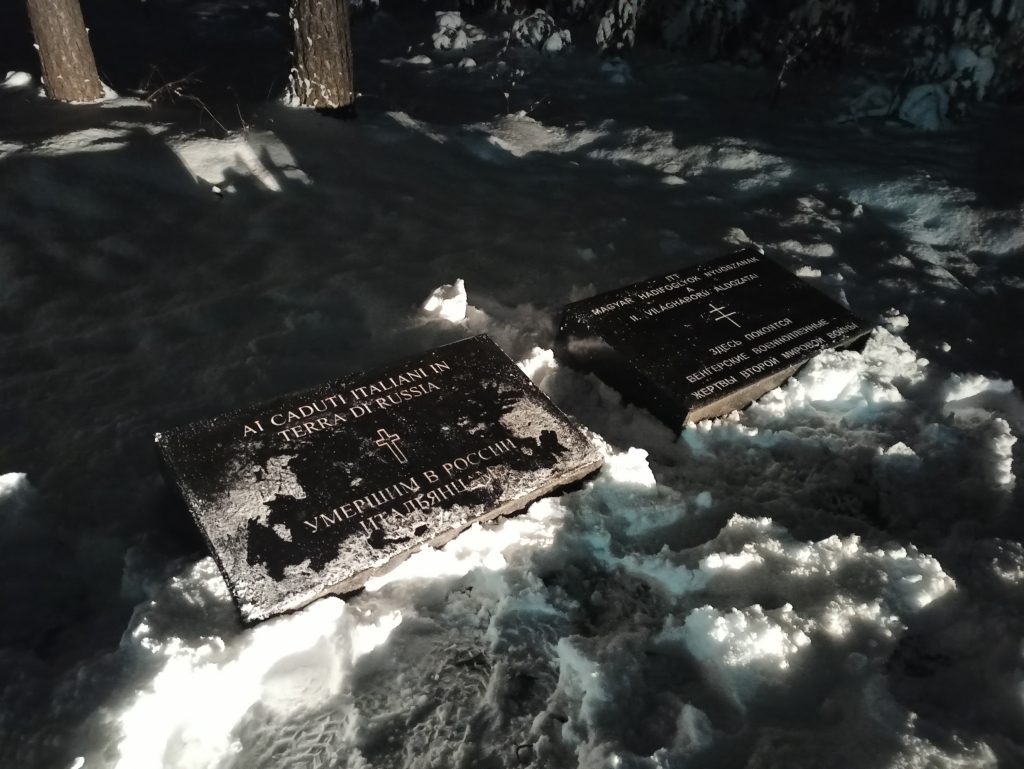
Copyright: Irina Galkova
It is surprising that in this place, where the past is so closely intertwined with the present, that there seems to be no room for memory at all. The only monument we discovered turned out to be a reminder of the WWII. It is the kind that shows war in its simplest and most terrible appearance. It was impossible not to be reminded of the war today. It was as if we had dug up a warning about an anonymous and painful death in a foreign land. The monument didn’t name names, but simply reminded us that people had existed and died.
Yuri often talks about the importance of the material component of memory. There must be a place, there must be a sign associated with that memory, fixing the reality of the disaster that occurred. A notch on the memory, becoming a barrier to the next step in committing the irreparable. In Sandarmokh, Yuri had placed a huge stone at the entrance to the memorial complex with the inscription: ‘People, don’t kill each other.’ But an abstract appeal, of course, is not enough. Memory is awakened when it touches our own. That human community, through which one realizes oneself and establishes oneself in the larger world: family, circle of fellow villagers, classmates, colleagues, co-religionists. Italian and Hungarian fellow-trainees of the dead prisoners of war. The people.
That is why, in the Karelian memory books compiled by Dmitriev, the biographical information on the victims is grouped not alphabetically but by settlements. Having found their ancestor in the lists, people will find the names and destinies of fellow villagers and neighbours, friends and acquaintances ‘Memory is what makes men and women human and people peoples, not populations,’ Dmitriev has said. In Sandarmokh, people of more than 50 nationalities were shot during the Great Terror. Dmitriev has done his best to enable each diaspora in Karelia to commemorate its compatriots and derive from this memory something important for its life today.
The Ukrainian memory is especially strong in Sandarmokh. It was here that in 1937 poets, writers, artists, theatre workers belonging to the so-called Ukrainian Renaissance of the 1920s and 1930s were executed. Every year a large Ukrainian delegation used to come to Sandarmokh. All in all, 25 national and confessional monuments were erected on the territory of the complex. The memory of the national tragedy is a powerful tool for people to comprehend their identity, their belonging to a nation, which realizes itself and has an enormous power of resistance to external influence.
More than ever, it is clear how Yuri’s activities in support of remembrance have become contrary to the logic of official guidelines. The wheel of violence has turned once again, destroying with ease all obstacles of memory, violating all human taboos. It is not easy for a historian to face this, even when their own life has not been broken. But when it has, vocation remains the only way to preserve oneself and to confront what is happening.
Published 16 June 2023
Original in Russian
Translated by
Antonina W. Bouis
First published by Eurozine
© Irina Galkova / Eurozine
PDF/PRINTSubscribe to know what’s worth thinking about.

The ‘Trump–Putin deal’ again places Ukrainians in a subaltern role. The leaked contract with its fantasy $500 billion ‘payback’ has been compared to Versailles, but the US betrayal recalls nothing so much as Molotov–Ribbentrop.
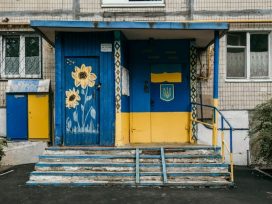
Ukraine faces its greatest diplomatic challenge yet, as the Trump administration succumbs to disinformation and blames them for the Russian aggression. How can they navigate the storm?